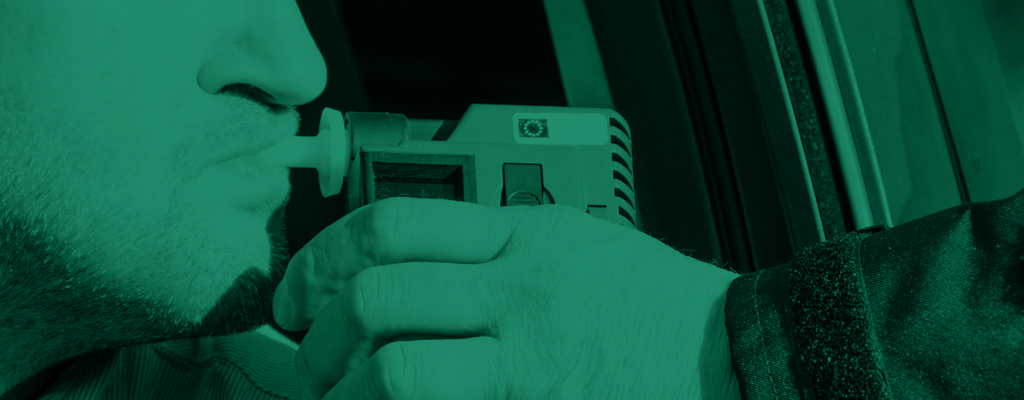History of the Breathalyser

This week our focus is on Point of Care (POC) testing, where we will take a detailed look at the different types of testing that is available to the market. Our first blog this week gave a general overview of POC testing and how it can allow workplaces to take control of their own testing. It then went on to discuss the different range of POC tests, from breathalysers to instant oral fluid and urine, along with the potential downfalls of POC testing.
Our second blog for this week will take a look at a specific aspect of POC testing; breathalysers. In particular how the breathalyser has evolved from its inception to its current uses.
Beginnings
The beginning of the breathalyser device can be traced back as far as 1874, when research began to determine whether or not it would be possible to use a person’s breath to test if they had consumed alcohol. However, it wasn’t until car manufacturing on a large scale in 1902 began that the idea of measuring a person’s level of intoxication became important. New York was the first place to put in place actual drunk driving laws, which came into effect in 1910.
Before the invention of the breathlyser, the only way in which police forces could determine if one was under the influence of alcohol was by using their own observations. They would look for signs such as bloodshot eyes, smell and whether or not the driver could walk in a straight line. These tests were known as field sobriety tests, with some still being utilised today.
Early advances
The first meaningful steps towards an actual breathalyser device were taken by Emil Bogen, who conducted research in 1927 involving air in a football and testing for traces of alcohol. His research involved around the hypothesis of testing someone’s breath alcohol concentration (BrAC) to their blood alcohol concentration (BAC). It was this initial research that allowed Indiana University Professor Rolla Harger to invent the ‘drunk-o-meter’ in 1938.
Professor Harger’s invention measured alcohol levels through what was known as a stable breath-testing environment. This coincidentally arrived as the United States was in the middle of the Prohibition. In order to use the device, one had to blow into a balloon and the air was then released into a chemical solution. If alcohol was present on the breath the solution would change colour. Harger then utilised a mathematical equation to estimate the amount of alcohol in someone’s body.
Breathlyser development
In 1954 Robert Borkenstein took Harger’s idea and improved it further. Borkenstein’s invention is widely regarded to be the most famous and well known. However, it has become synonymous with all breath testing devices and machines regardless of brand name or type. Borkenstein had a vested interest in photography, and this led to the invention of the breathlyser, which utilised chemical oxidation and photometry to determine the alcohol content in a person’s breath. The results produced by the device were then analysed electronically.
Modern breathlysers
Since the 1950’s enormous advances have been made due to the development in technology. Today’s breathalysers are more or less automatic and are designed to be operator proof in order to eliminate the chance of human error. There is a wide range of breathalysers available today, each availing of different types of technology. These range from electrochemical fuel cell breathalysers, where an electrical current is produced as a result of a chemical reaction taking place on the surface of an electrode system. The small electrical current then produced by the alcohol in a person’s breath reacting on the electrode within the machine can be used to give a digital reading. Other types of breathalysers include infrared optical sensor breathalysers, dual sensor breathalysers and semiconductor breathalysers.
How does Randox Testing Services utilise new technologies?
Randox Testing Services utilises the latest in breathalyser technology as part of its POC range. Our range of breathalysers include the Intoximeters Alco-Sensor FST and the Intoximeters Alco-Sensor V Breathalyser. The Intoximeter breathalysers use the latest in fuel cell technology, allowing for accurate detection of breath alcohol levels. The devices generate immediate results, are easy-to-use and equipped with read display, allowing for quick and simple interpretation. They are also flexible with the ability to test passive, direct or liquid samples as well as breath expelled into a container. All of these advantages, combined with being type approved by the UK Home Office, ensure that we offer only the best POC alcohol testing products on the market.
We also provide a range of accessories to accompany the Intoximeter’s equipment; from printer paper, calibration gas to a trigger regulator. These devices are available to purchase from us directly or can be leased through a maintenance contract.
For more information about how Randox Testing Services can assist you for your Point of Care requirements, please contact us at testingservices@randox.com or visit our website www.randoxtestingservices.com
